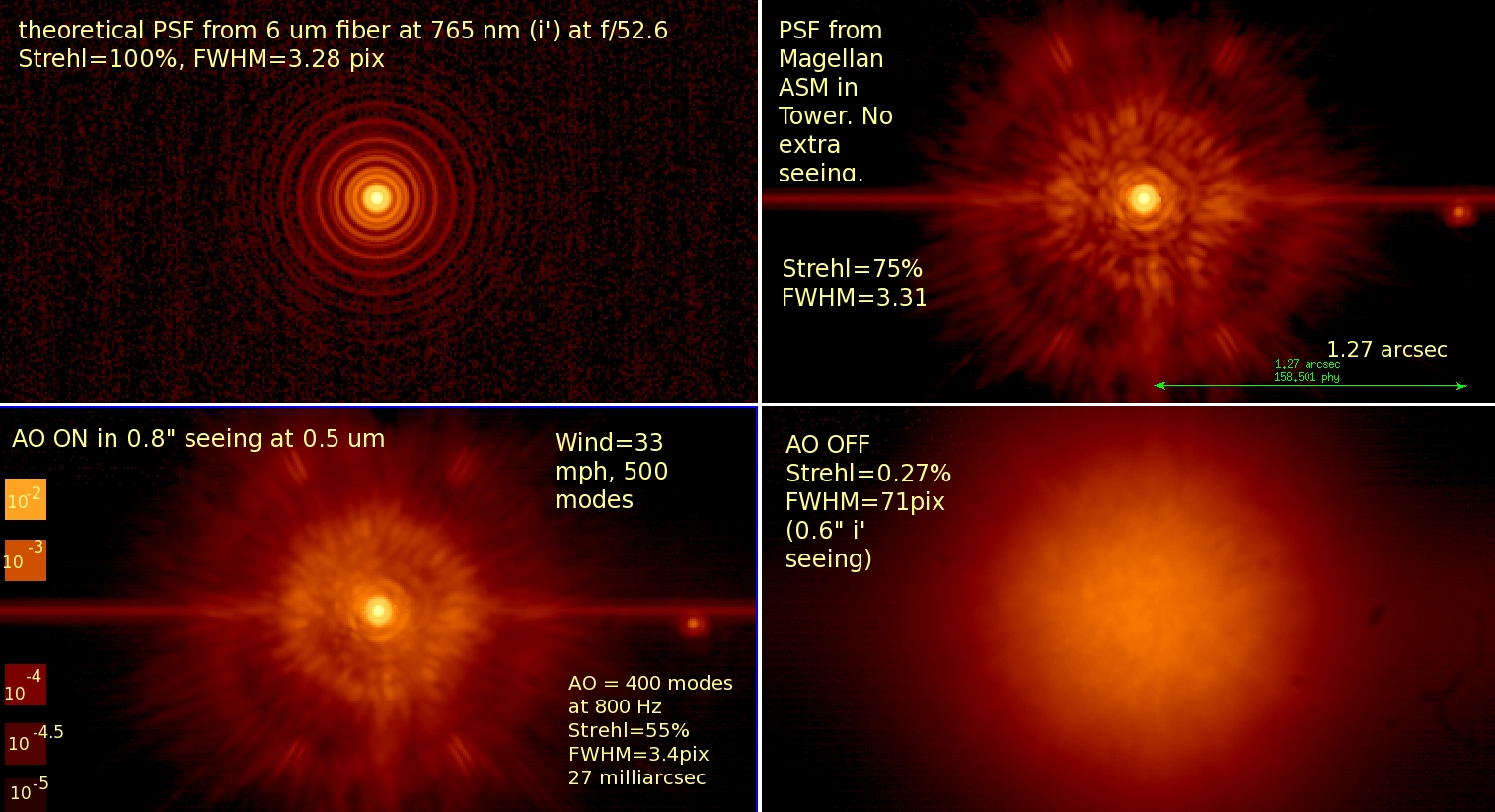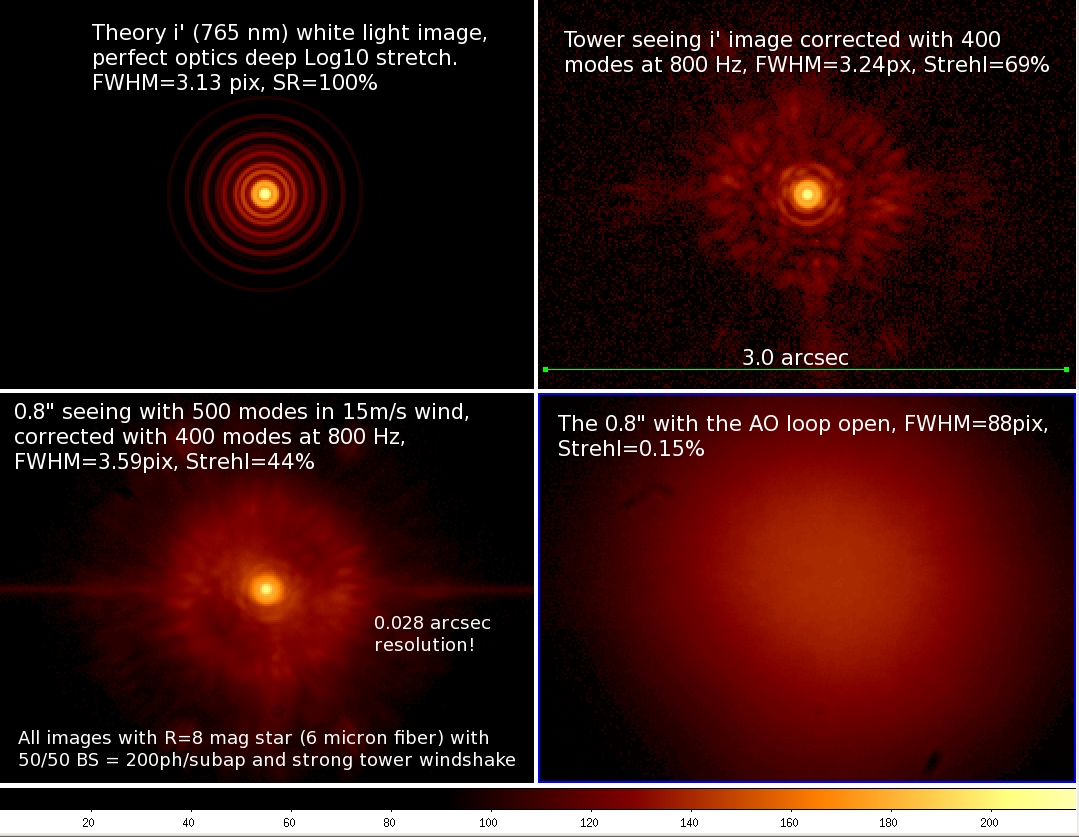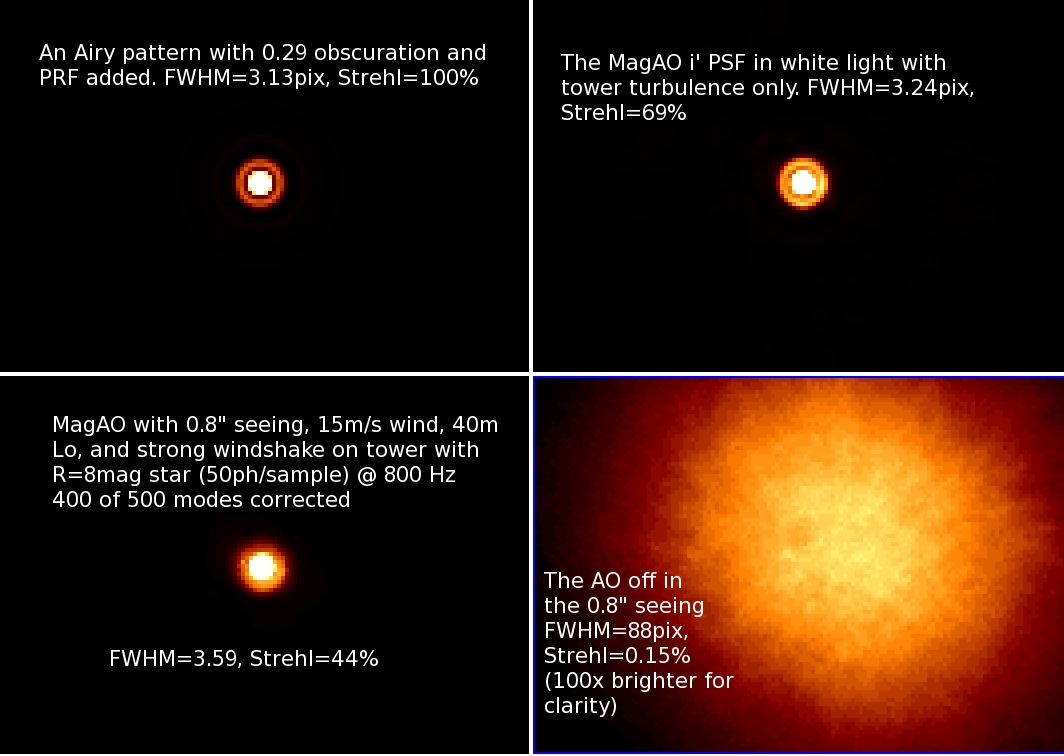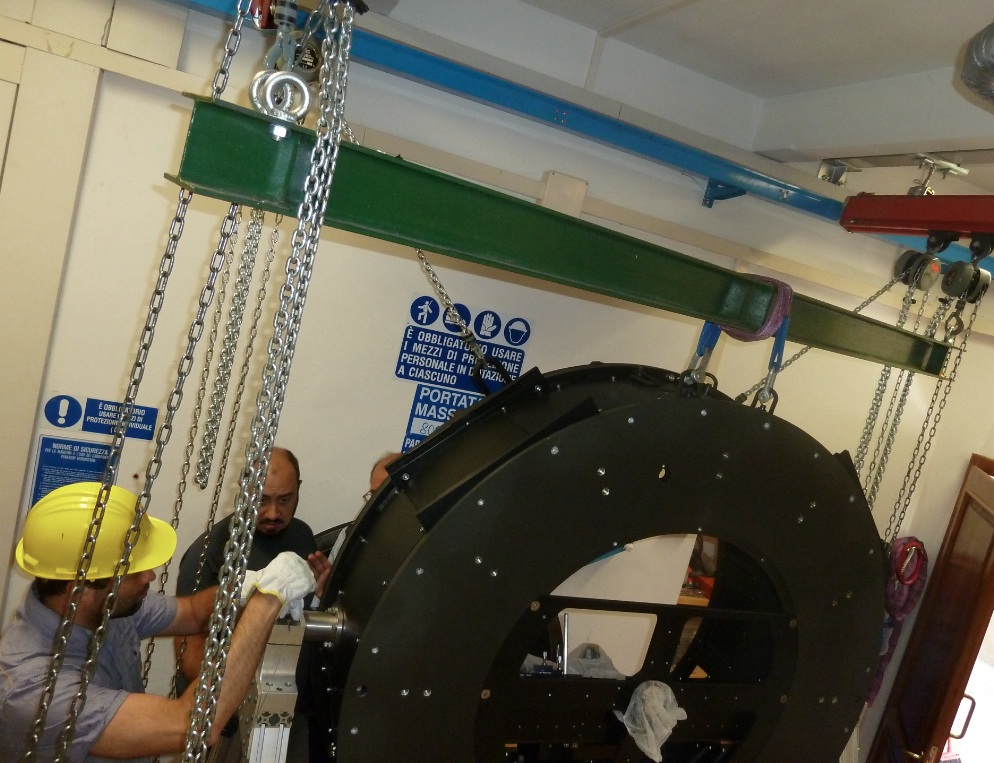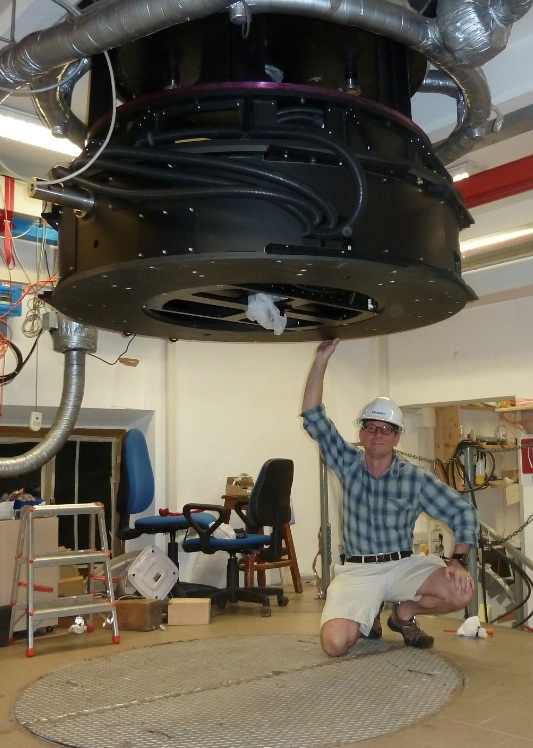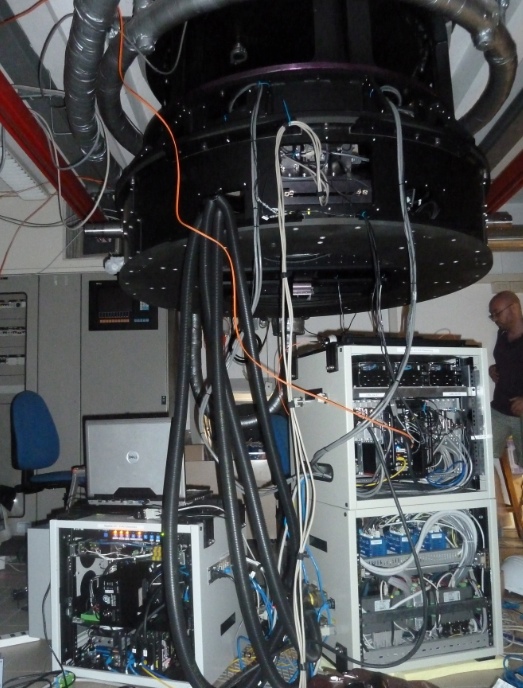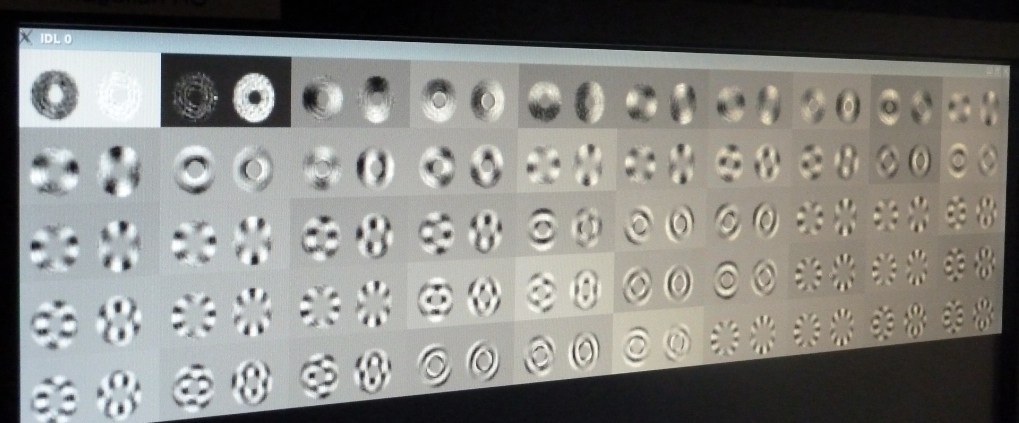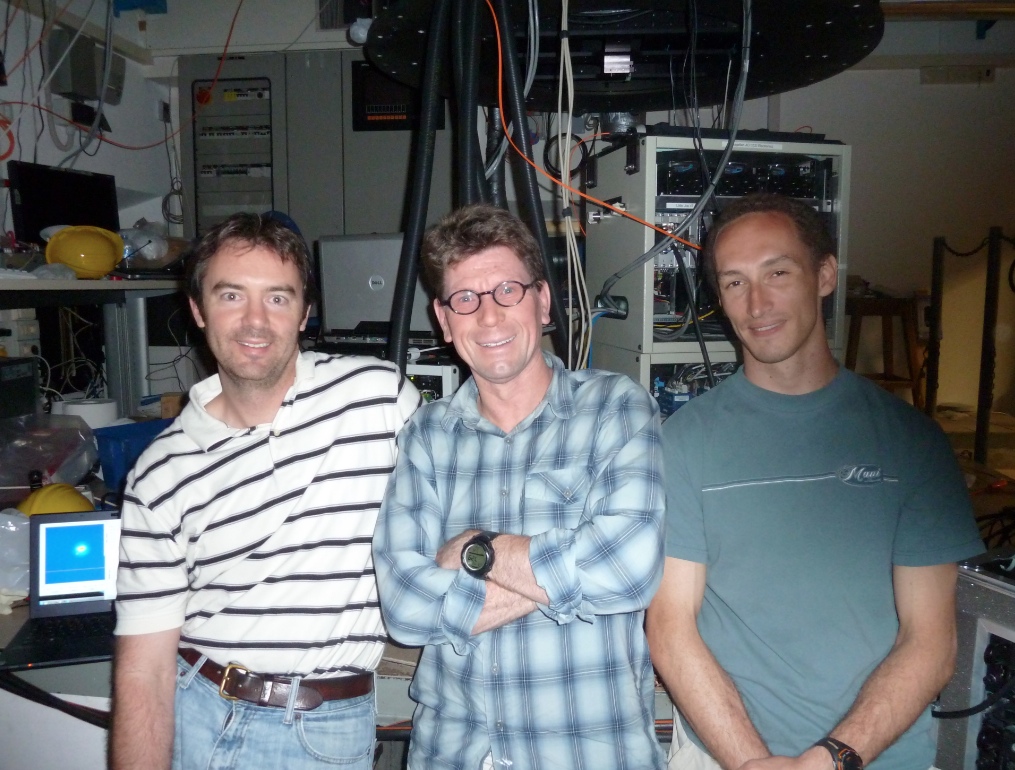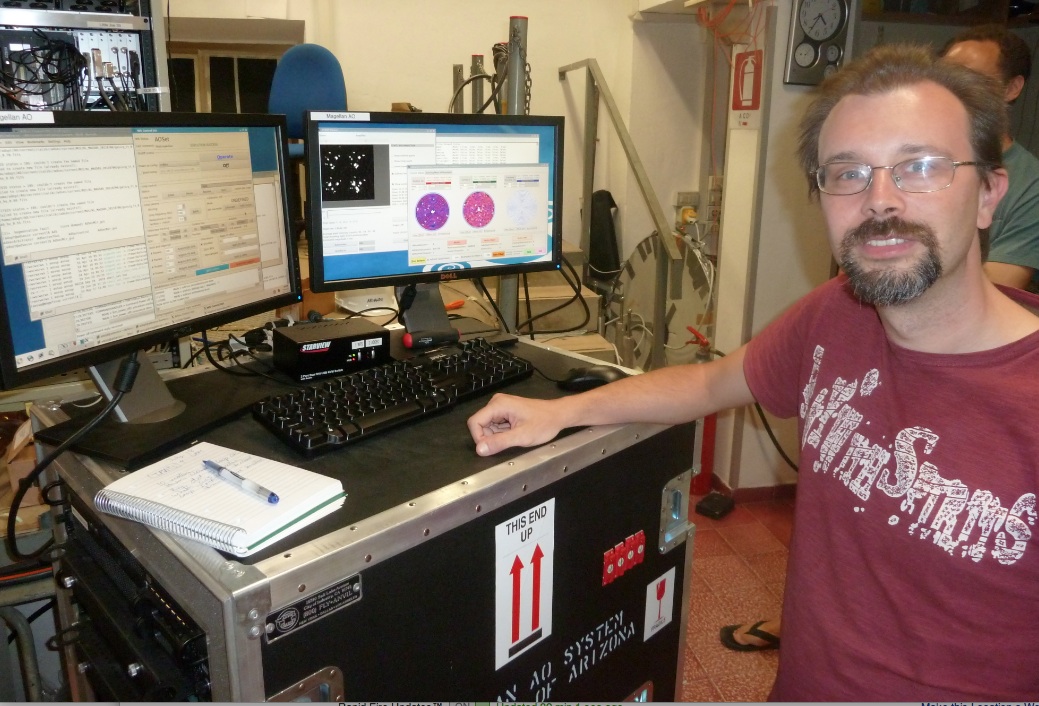Here is a short film of the VisAO camera at i’ (765 nm) in 0.8″ seeing (33mph wind) with the loop open (0.3% SR, FWHM~0.6″) and closed (55% Strehl, FWHM=0.027″) at 800 Hz (400 modes) in the test tower.
This is a >180 increase in peak counts (and >20x gain resolution) obtained by turning on the loop!
Note that the PSF is saturated out to the first Airy ring in this (rather poor) stretch. The red dot is the focus light from the videocamera (ignore it).
